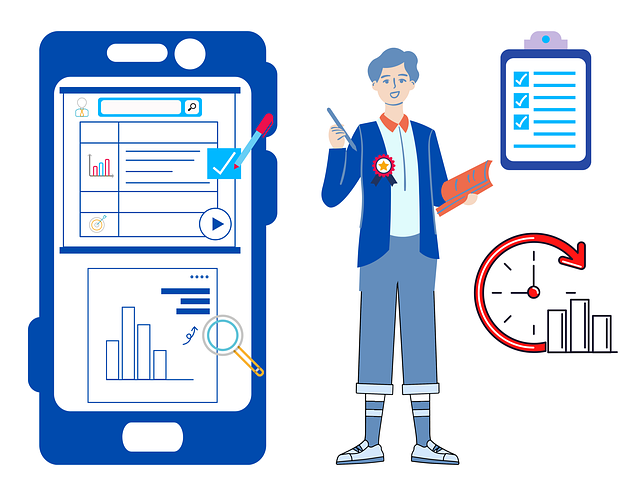AI-powered hazard detection systems are transforming the cleaning industry by enhancing safety and efficiency through real-time risk identification. Local cleaning businesses can leverage AI dynamic website content to provide personalized information, streamline booking processes, and showcase unique selling points, gaining a competitive edge. The implementation process involves data collection, expert labeling, model training using machine learning algorithms, testing, and platform deployment tailored for local cleaning services, ultimately improving user experiences and driving conversions.
“Revolutionize your cleaning business with AI hazard detection systems, a game-changer in today’s digital era. This article explores how these intelligent systems, powered by AI and dynamic website content, enhance safety and efficiency. Learn about the benefits tailored to local cleaning businesses, from improved risk assessment to real-time data insights. Discover a step-by-step guide to implementation, ensuring optimal hazard identification and a proactive approach to keeping spaces clean and safe.”
- Understanding AI-Powered Hazard Detection Systems in Cleaning Services
- Benefits of Dynamic Website Content for Local Cleaning Businesses
- Implementing AI: A Step-by-Step Guide for Optimal Hazard Identification
Understanding AI-Powered Hazard Detection Systems in Cleaning Services

AI-powered hazard detection systems are transforming the landscape of cleaning services, offering a new level of safety and efficiency. These innovative solutions utilize advanced algorithms and machine learning to identify potential risks in real time, ensuring a thorough clean every time. By integrating AI into their dynamic website content for local cleaning services, businesses can showcase their commitment to customer safety and environmental sustainability.
Such systems analyze various data points, from sensor feedback to visual reconnaissance, to detect and mitigate hazards like slip-and-fall risks, chemical exposure, or even hidden dirt and grime. This proactive approach allows cleaning professionals to adapt their methods on the fly, enhancing overall service quality. With AI leading the way, local cleaning services can provide a more personalized, safe, and effective clean for each unique space they enter.
Benefits of Dynamic Website Content for Local Cleaning Businesses

For local cleaning businesses, adopting AI dynamic website content is a game-changer. It allows them to present real-time, tailored information to potential customers, enhancing user experience and driving conversions. By leveraging AI, these businesses can create personalized landing pages that highlight specific services, display relevant pricing, and even offer instant quotes based on customer inputs, making the booking process quicker and easier.
This technology also ensures that website content remains fresh and accurate, reflecting the latest service offerings and promotions. Dynamic content enables local cleaning providers to stand out in a competitive market by showcasing their unique selling points, such as eco-friendly products or specialized cleaning techniques, capturing the attention of customers seeking these specific solutions.
Implementing AI: A Step-by-Step Guide for Optimal Hazard Identification

Implementing AI hazard detection systems is a multi-step process designed to optimize the identification and mitigation of potential risks within cleaning environments. It begins with data collection, where diverse sources such as historical incident reports, safety protocols, and real-time sensor readings are assimilated. This raw data is then meticulously labelled and categorized by subject matter experts, establishing a comprehensive dataset for training AI models.
Next, the selection of appropriate machine learning algorithms plays a pivotal role in accuracy. Supervised learning techniques excel at pattern recognition through labelled examples, while unsupervised methods uncover hidden anomalies. After algorithm choice, model training involves feeding the AI with the prepared dataset, allowing it to learn and adapt to the nuances of hazard detection. Regular testing and iterative refinements ensure optimal performance before deployment on a dynamic website platform catering to local cleaning services.
AI-powered hazard detection systems are transforming the cleaning industry, offering local businesses enhanced safety and efficiency. By leveraging dynamic website content, cleaning companies can effectively communicate their advanced technology and improved service quality to potential clients. Implementing these AI solutions involves a structured approach, from assessing unique hazards to integrating smart sensors and training AI models. Embracing AI not only boosts operational effectiveness but also fosters trust and sets local cleaning businesses apart in the market.
